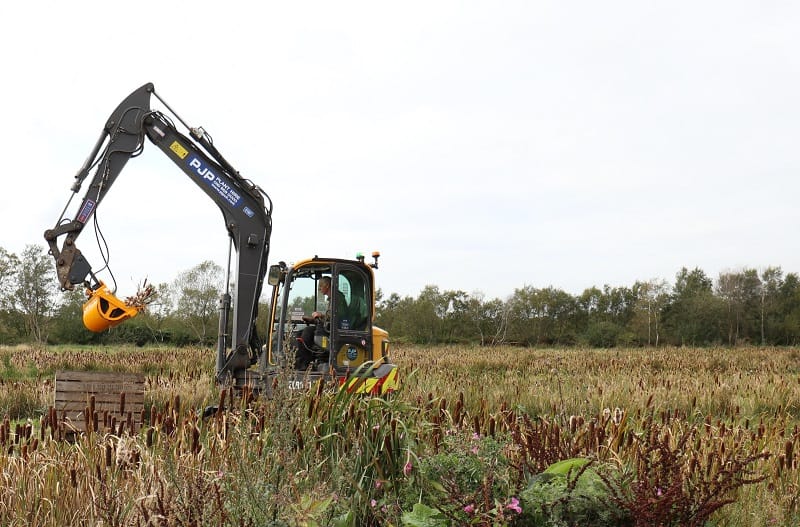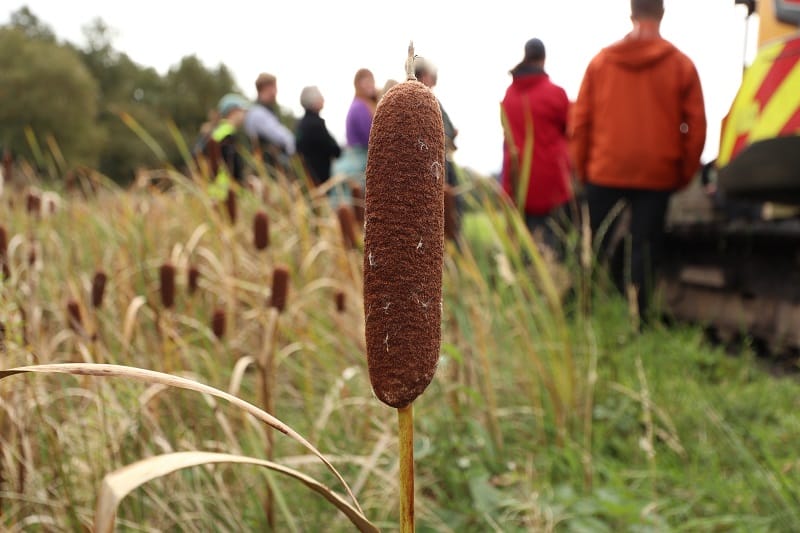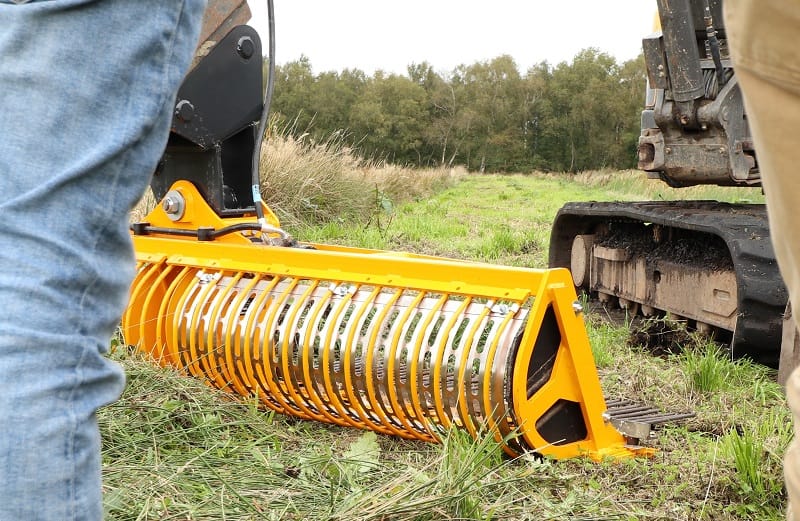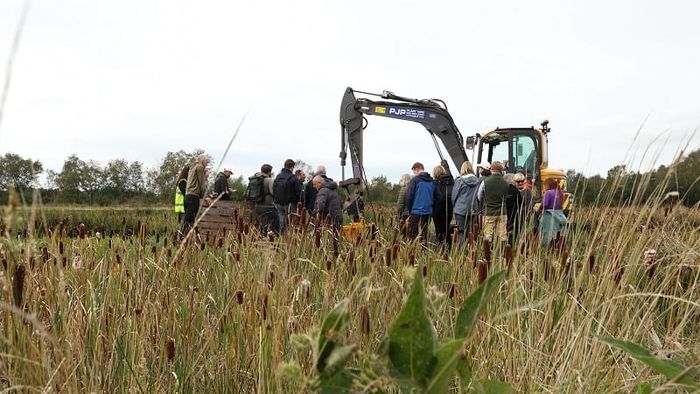LANCASHIRE WILDLIFE TRUST: Bulrush harvesting demo (Image: Kirsty Tyler
Last week saw the exciting first harvest of bulrush heads for The Wildlife Trust for Lancashire, Manchester and North Merseyside’s wetter farming trial site on a farm on Chat Moss in Greater Manchester.
After a huge amount of work in the last two years transforming what was once a waterlogged and unproductive field into a pioneering wetter farming trial, the first harvest of bulrush seed heads has started on Steve Denneny’s farm in Greater Manchester.
Greater Manchester is home to Chat Moss, once one of the largest expanses of lowland raised peat bog in the UK.
But sadly, only fragments of the once healthy soggy wetland landscape remains after it was drained for agriculture to provide food for the rising population in the 20th century.
READ MORE Digger in action (Image: Kirsty Tyler)
Digger in action (Image: Kirsty Tyler)
Recently however, many of these areas of drained farmland have become increasingly waterlogged due to changes to weather patterns and had been proving almost impossible to get a traditional crop of cereals, potatoes or vegetables from.
As well as being unsuitable for a lot of crop growing, draining our peatlands releases stored carbon into the atmosphere, and removes habitat for a lot of special peatland species, like the large heath butterfly, white faced darter dragonfly and bog bush cricket.
Bulrushes, otherwise known as ‘typha’, are the perfect crop to plant on boggy land.
 Bulrushes will become clothing (Image: Kirsty Tyler)
Bulrushes will become clothing (Image: Kirsty Tyler)
They’re often found along the edge of ponds and other wet areas, so don’t struggle with a wetter field like other traditional crops do.
Steve Denneny who farms the land which is owned by Peel L&P said: “It’s been really exciting seeing the harvest today after all the work that’s gone into getting here. There’s still more learning to do but it’s a great start”.
Other wetter farming trial sites across Europe have harvested bulrushes by hand, due to difficulties harvesting from boggy, delicate land, however our Manchester site is one of two in the UK utilising machinery for the first time – with this trial using a digger with a reed cutting bucket on the end.
 Reed cutting digger head (Image: Kirsty Tyler)
Reed cutting digger head (Image: Kirsty Tyler)
Steve and his team have already been making modifications to the digger bucket to make sure it’s suited to the task, and the more they harvest, the more learning and modifying will be done.
By using machinery to harvest the crop, the time and manpower to process the bulrushes will be reduced, keeping the costs down for the farmer and customer.
The customer is materials science company Ponda, who are turning the fluffy bulrush heads into a sustainable filling for padded jackets, which has traditionally been goose down or polyester.

Research is also underway to find a market for the stalks and leaves, looking at options like takeaway containers and even wallpaper.
A harvesting demo was held at the farm last week with attendees from organisations including Natural England, the Environment Agency, Manchester Metropolitan University, Peel L&P and others, with talks from Ponda and Lancashire Wildlife Trust as well as a Q and A with farmer Steve.
It was great to share this exciting moment with like-minded people, passionate about restoring the landscape and farming our land in a way that will keep our land both nature-friendly and productive for future generations.

By Kirsty Tyler from Lancashire Wildlife Trust for The Wildlife Trust for Lancashire, Manchester and North Merseyside.
